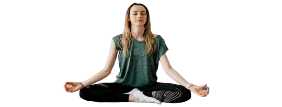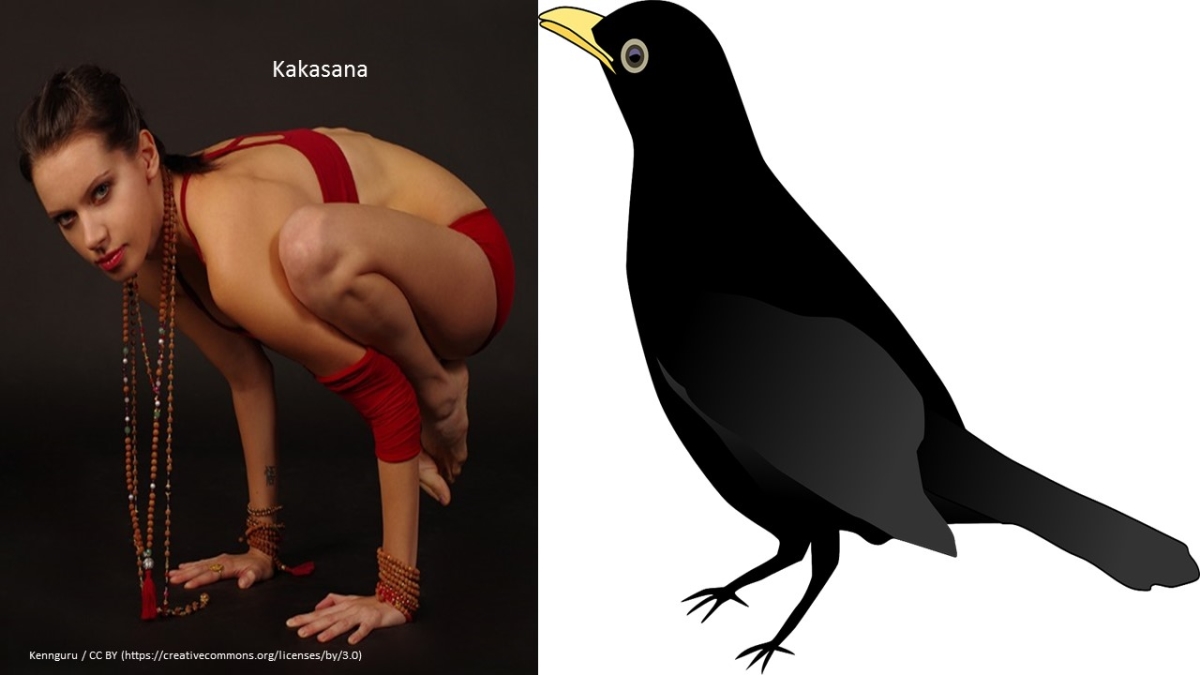Introduction
Kakasana is one of the traditional yoga practice which has been in practice among different yoga lineages. It is an intermediate-level arm balancing yoga exercise. It was found mentioned in Sritattvanidhi for the first time in the 19th century CE.
Kakasana Information
| Pose Name | Kakasana |
| Sanskrit Name | काकासन |
| IAST | kākāsana |
| English Name | Crow Pose |
| Origin | Traditional |
| Difficulty Level | Intermediate |
| Type | Arm Balancing |
| Group | Peacock Pose |
Kakasana Meaning
Kaka in Sanskrit means a crow and Asana means a yoga position. In the final position of the pose, it looks similar to a crow. Hence it gets the name Crow Pose.
Kakasana Vs. Bakasana
Crow Pose often confused with Bakasana that is known as Crane Pose in English. Crane Pose is also an arm balancing pose that looks very similar to Crow Pose except for the position of arms.
In Crow Pose, elbows are bent; whereas in Crane Pose arms are straight without bending the elbow.
Medieval yoga texts did not mention about Crow Pose; whereas Hatha Tattva Kaumudi describes Crane Pose.
However, both yoga poses were in traditional practice since the 19th Century Yoga book Sritattvanidhi describes both of the yoga poses.
Swami Satyananda Saraswati of Bihar School gives a different version of Crane Pose.
Crow Pose Procedure
Kakasana Safety and Precautions
Pregnant ladies should not attempt this pose. Also, those who are diagnosed with osteoporosis and shoulder disorders like a dislocated shoulder, Rotator Cuff Tendinitis, frozen shoulder, and arthritis should avoid this practice.
Preparatory Poses
The practice of other arm balancing poses like Peacock Pose, Astavakrasana, and Rooster Pose will help get mastery over crow pose very easily.
Kakasana Steps
Step 1
Squat down and place the palms on the floor shoulder-width apart. Tilt a little forward and raise the legs. Place the knees in between the body and upper arms. Now, the weight of the body should be on the palms.
Step 2
Bend the elbows halfway between the body and the floor. Keep the eyesight on any object before you and maintain the focus and balance. The hand position is the main difference between the Crow Pose and Crane Pose. In Crow Pose, the arms are straight; whereas, in Crow Pose, arms are bent. Now the arms resemble the legs of a crow.
Step 3
Breathe normally. Keep the position as long as it is comfortable.
Step 4
Release the Position by straightening your arms and then bringing the feet down to the floor.
Duration
Initially while mastering the Pose, a duration of one or two minutes is enough. This may be extended up to five minutes.
Advanced Pose Considerations
After mastering Crow Pose, one may take the following practices.
- Bakasana
- Bhujapidasana
- Dwi Hasta Bhujasana
- Dwi Pada Koundinyasana
- Mayurasana
- Feathered Peacock
- Tittibhasana
Kakasana Benefits
- Crow Pose strengthens arms, wrists, and stomach muscles.
- It improves focus and balance. This makes it easy to perform advanced-level yoga poses like Pincha Mayurasana.
- Kakasana boosts the functions of internal organs of the stomach.
- It reduces the belly fat and thereby aids in weight management.

